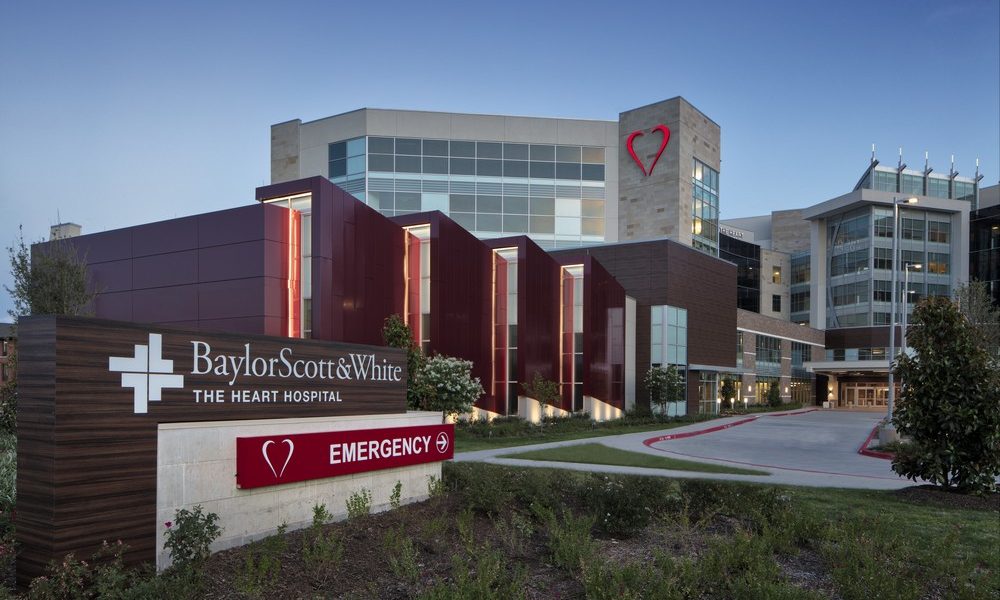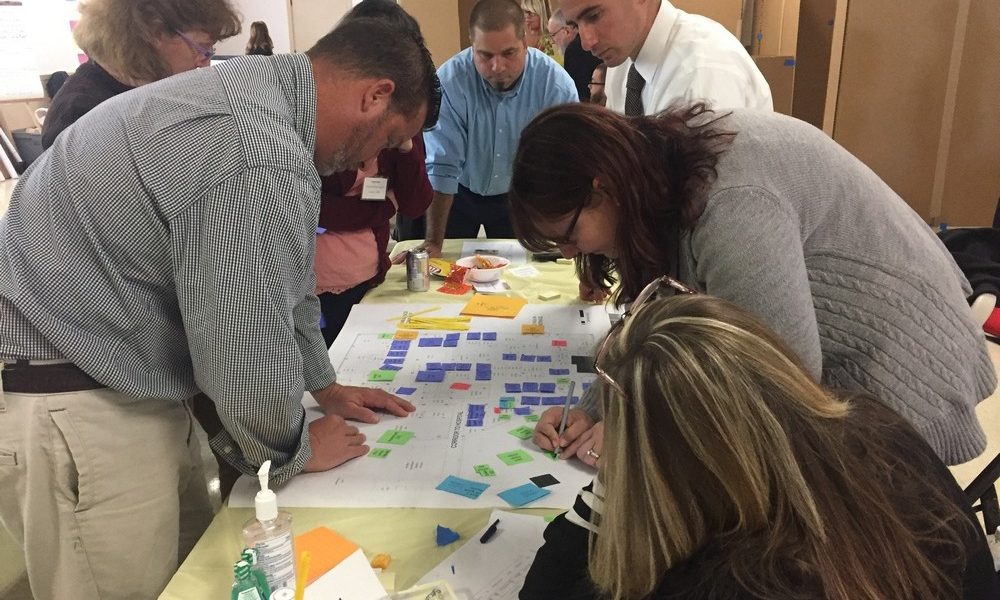 The Baylor Scott & White Heart Hospital Plano, Texas’ new 164,000-square-foot addition is an example of for-profit and not-for-profit clients partnering with each other to deliver world-class cardiovascular care to the community.
The Baylor Scott & White Heart Hospital Plano, Texas’ new 164,000-square-foot addition is an example of for-profit and not-for-profit clients partnering with each other to deliver world-class cardiovascular care to the community.  E4H hosted a three-day workshop during the schematic design phase of an emergency department renovation and attended by healthcare executives and administrators, physicians, nurses, supply chain, IT, maintenance and utility and past patients.
E4H hosted a three-day workshop during the schematic design phase of an emergency department renovation and attended by healthcare executives and administrators, physicians, nurses, supply chain, IT, maintenance and utility and past patients. Subscribe Now
Introducing a For-Profit Mentality into Healthcare Projects
By Brian Willer
The healthcare industry nationwide has seen a substantial increase in mega-mergers and acquisitions as collaboration between for- and not-for-profit healthcare systems continues to grow. With a for-profit mindset, systems use M&As to increase their catchment area while evaluating financial assets, which often leads to either the consolidation of existing services or the addition of new services. While systems in some regions have joined this trend at a rapid pace, others are cautiously waiting to see results from these developing changes. What drives the for-profit process, and how does it differ from the not-for-profit approach to design and construction?
Standardization
Most design and construction projects are driven by one important factor: Time. Speed-to-market considerations influence every aspect of the process as healthcare systems try to complete projects in abbreviated timeframes. By developing design standards, systems can expedite the design process while maintaining brand uniformity across locations.
Design standards typically include interior finishes, engineering requirements, details, specifications, policies and procedures that are applied throughout the system’s facilities in areas such as patient rooms, common areas and support staff areas. Most large not-for-profits have design standards in place, but smaller systems need help developing and maintaining their standards.
Creating and maintaining design standards is an ongoing process that directly correlates to Lean design or PLAN, DO, CHECK, ACT. Design standards create a living document that continually adapts to today’s code requirements. The standards are typically reviewed quarterly for adherence to small items from regional authorities having jurisdiction and every 2-3 years for FGI Guidelines. Updating standards and reviewing regularly decreases the time and effort required during design. Implemented standards also allow hospitals or operators to predict the quantity and quality of the components installed in facilities each fiscal year. This process is the start of leveraging scale in construction; though admittedly, this is not a one-size-fits-all approach.
Design is led from the top down
In-house design and construction teams in a for-profit healthcare setting are generally structured so the owner is the design subject matter expert along with an integrated design team. The hospital may have some influence on design, but decisions are ultimately guided by the corporate design standards.
For a for-profit system, preliminary design standards are benchmarked next to national standards. This approach is due to the national reach of the system. Best practices guide the overall standards in design and beyond, thus creating more efficiencies and less localized focus.
Sophisticated, well-funded health systems employ clinical experts to influence design standards in areas such as clinical oversight, equipment planning, IT, etc. In-house experts expedite the decision-making process. The for-profit model challenges experts to make decisions best suited for the entire organization versus one local facility. Conversely, a not-for-profit model is typically more locally focused.
For-profit systems often employ in-house experts such as medical equipment planning, architecture and construction professionals, while most not-for-profit systems rely on architecture/design firms for guidance.
User group involvement varies significantly. The for-profit approach consists of a smaller group of decision makers, typically C-suite executives, who come to the table prepared with historical data and some initial pre-planning, which allows the team to make decisions quickly and efficiently. The kick-off meeting involves clearly identifying with users the basic concepts/operational guidelines, then having the architectural subject matter expert refine operational concepts and important configurations. Users are then re-engaged at design development to provide input on minor details and equipment placement, reducing the time spent on meetings. In a not-for-profit approach, user groups incorporate many more departments and staff and are much more heavily involved in the operational and aesthetic design of the space. Each approach comes with a unique set of challenges and benefits.
Efficiencies
For-profits are efficient in a variety of ways as they typically rely on national industry standards and best practices to drive facility decisions. Not-for-profit systems often engage the community to assess needs and frequently invite all departments into the process. The inclusion helps staff and patients feel ownership and goes a long way in achieving consensus, but it can be a long process and over specialized to fit a particular operational style driven by current staff. Often, by the time a not-for-profit project is built, department heads will have changed and new ones will expect the same amount of latitude in customizing to their operational preference. These last-minute changes create delays and very expensive change orders. Not-for-profits also spend money in areas where for-profits never would. With a business model focused on profits, for-profit systems are more likely to take a business approach as opposed to a community grassroots outreach strategy.
Historically, not-for-profits are local thinkers, which can create redundancies across the system. Not-for-profits are also more likely to be early adopters of new trends as they continually search for local solutions. Being nationally focused, for-profits trail behind on investing in new trends. They are more likely to wait and see how the new trends play out before adopting them into their national playbook.
Lean design and construction is a great example of a major trend that for-profits have adopted and lead today. Although there is an uptick in this practice among not-for-profit healthcare systems, it is more prevalent in for-profit design. Implementing a collaborative design process saves money, can expedite a project schedule and ultimately provide a better product. The modular and pre-fab approach is also more prominent in the for-profit realm because of standardization and repetitive spaces. Although newer, not-for-profit systems adopt these methodologies, the for-profits apply them more frequently due to their different methodology/construction leadership structure.
Leveraging scale in procurement of materials + sourcing
Costco, Walmart and other big box stores demonstrate the benefits of buying in bulk. Larger for-profit systems leverage their scale by bulk purchasing from vendors. Companies such as Healthtrust Purchasing Group negotiate and vet vendors so the owner knows they will provide approved, quality products.
Not-for-profits can benefit from this approach as well. While they may not have the overall scale of some of their for-profit competitors, non-profit systems are growing and do have continuing capital expenses at their hospitals along with their network of clinics and other facilities within their systems.
Condensed design schedules and well-coordinated design teams can move as fast as decisions are made by the owner. The system’s approach helps set the pace. Whether for- or not-for-profit, there are efficiencies and standards that can be set to alleviate redundancies, decrease cost and increase speed-to-market solutions.
Photos courtesy of E4H Environments for Health Architecture.
Author: Brian Willer
Brian Willer, AIA, NCARB, is managing partner of E4H Environments for Health Architecture – Nashville, Tennessee.
Tags: Architecture, Construction, Engineering, FGI Guidelines, For-Profit, Lean, Not-for-Profit, pull planning
Posted July 17, 2019
More Articles:
- Coverings 2024
Apr 22, 2024 – Apr 25, 2024 - Hospital, Outpatient Facilities & Medical Office Buildings Summit
Apr 25, 2024 – Apr 25, 2024 - CxA Workshop & Exam
Apr 29, 2024 – Apr 30, 2024 - EMP Seminar & Exam at CxEnergy 2024
Apr 29, 2024 – Apr 30, 2024 - CxEnergy
Apr 29, 2024 – May 2, 2024 - PHCC West 2024
Apr 29, 2024 – May 2, 2024 - Lean in Design Forum 2024
May 1, 2024 – May 2, 2024











